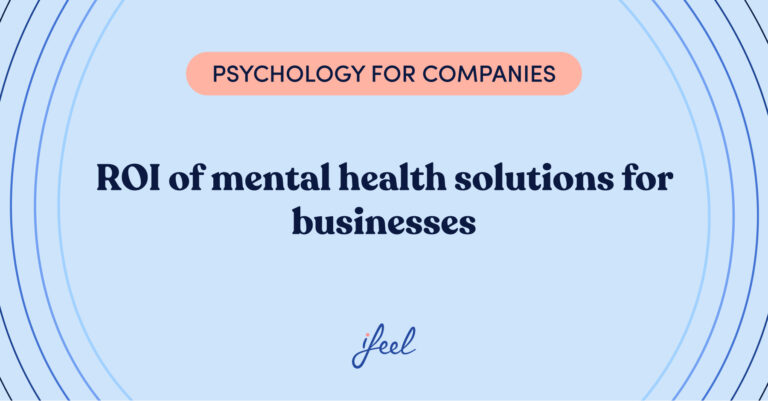You have probably already heard of the OKR methodology. The reason for the popularity of this technique is that it has proven to be the key to unlocking organisations’ potential, especially Human Resources teams.
Basically, in today’s hectic world of work, having a strategy that allows us to organise our work is essential. In this context, the OKR methodology emerges as a tool that allows us not only to organise tasks but also to establish professional goals and objectives that guide our efforts and maximise our impact on the company.
What is the OKR methodology?
The OKR methodology is a strategy used for decades by the largest companies, which helps align the team and focus on what matters for the organisation.
When a company wants to set short-, medium- and long-term objectives, it must first carry out an analysis that allows it to estimate where it wants to direct business actions. Based on this analysis, each department sets specific objectives within a calendar, allowing us to estimate the expected results based on the results achieved so far.
These key objectives are known as OKRs: “Objectives and Key Results”, which gives the OKR methodology its name. This methodology seeks to improve teams’ performance by measuring them qualitatively and quantitatively and aligning them with the business vision.
Therefore, to apply this methodology, the objectives to be achieved are described and associated with a numerical value that facilitates the evaluation of this progress. In other words, the objective is established together with a numerical indicator (date, quantity, etc.), which will make it possible to evaluate the progress of that goal and check that it has been achieved.
For example, a human resources manager may set the objective of increasing the size of a certain department (“objective”) by at least three people during the first quarter of the year (“key result”).

This point represents the key differentiator of this methodology in relation to others, as the OKR methodology not only seeks to define the goals in a clear and detailed manner but also seeks to define the concrete actions that must be carried out to achieve them.
Professional objectives are defined at the beginning of each year or quarter, and professionals must set clear objectives that drive their development and contribution to organisational success. To this end, the OKR methodology provides an effective structure for defining ambitious but achievable goals, aligning individual aspirations with the company’s strategic objectives.
Benefits of the OKR methodology
Companies can adopt various working methodologies to improve efficiency and productivity. From agile methodologies to traditional approaches, the choice depends on the context and the team’s needs.
For this reason, it is normal that the question, why should I opt for a new methodology, comes up. The answer is that as times change and the company grows, workloads and responsibilities increase, so it is necessary to find a new strategy that fits the team’s needs and therefore, prevent the work pace from slowing down or stagnating.
In this sense, the OKR methodology stands out by providing a clear structure that optimises processes while promoting transparency, accountability, and collaboration to adapt to different working environments. In other words, companies using the OKR methodology must support their employees, especially in defining key results that align and encourage teams towards a common goal.
OKRs in Human Resources
HR departments are constantly undergoing significant transformations. The latest trends in HR indicate that a more employee-centric approach, diversity and inclusion, and continuous development are becoming increasingly important.
This is why integrating the OKR methodology into HR offers a number of strategic advantages:
- Clarifies goal setting: The OKR methodology facilitates the alignment of individual objectives with organisational objectives, providing clarity and direction to HR teams.
- Enables transparent performance reviews: OKRs provide a transparent and objective framework to assess performance, allowing HR professionals to measure progress and recognise outstanding contributions.
- Focuses on results: The OKR methodology focuses on results, which helps HR teams demonstrate the direct impact of their efforts in achieving the company’s strategic objectives.
At ifeel, we are always one step ahead in supporting HR leaders. That’s why we designed this resource to help HR managers set OKRs for the new year. Download it here for free!

Differences between OKRs and KPIs
When embedding the OKR methodology in HR, it is crucial to identify and measure key performance indicators (KPIs). However, among so many different terms, it is also common to find confusion between them.
A KPI, or Key Performance Indicator, is a measurable value that evaluates the performance of a specific activity or process, such as the number of new employees in a month. So, while KPIs are used to evaluate employees’ performance, OKRs have a different purpose: to motivate them and provide them with a clear direction in which to orient their work.
While KPIs show how the business is performing, OKRs determine which objectives and results should be achieved. For this reason, the two methodologies are complementary, and combining them represents a better strategy for the company.
To exemplify the above, we could mention that a KPI in HR could be “employee turnover“, as this metric measures how often employees leave the company in a given period. A related OKR could be “strengthen talent retention” (target), with the key result “reduce the employee turnover rate by 15% over the next six months”. In this case, the KPI focuses on the specific metric of employee turnover, while the OKR addresses the broader objective of retaining talent.
By implementing the OKR methodology in the talent management department, we could mention some KPIs in Human Resources, such as:
- Retention rate: Assessing talent retention as an indicator of the effectiveness of HR management strategies.
- Employee satisfaction: Measure the level of employee satisfaction to assess the work climate and the effectiveness of HR initiatives.
- Time to hire: Analyse efficiency in hiring processes, from job posting to onboarding.
- Skills development: Assess progress in skills development through training and education programmes.

Unlock your team’s potential
At ifeel, we know that the OKR methodology provides a solid structure for aligning individual and departmental objectives with organisational goals. For HR departments, this translates into more effective management, continuous development, and significant contribution to the company’s overall success.
To support companies in this process, our team of expert workplace well-being psychologists has created a mental well-being solution for businesses that improves talent retention, reduces presenteeism, and combats employee stress.
With our mental well-being solution, your company’s HR managers can receive personalised, data-driven advice on improving mental health at work. In addition, this solution offers employees a 360° mental well-being service structured at different levels according to their needs. Try our solution now to see how it could help you.
We hope you found this article about the OKR methodology interesting. If you would like more information about our mental well-being solution for companies, simply request it, and we will contact your team as soon as possible.






